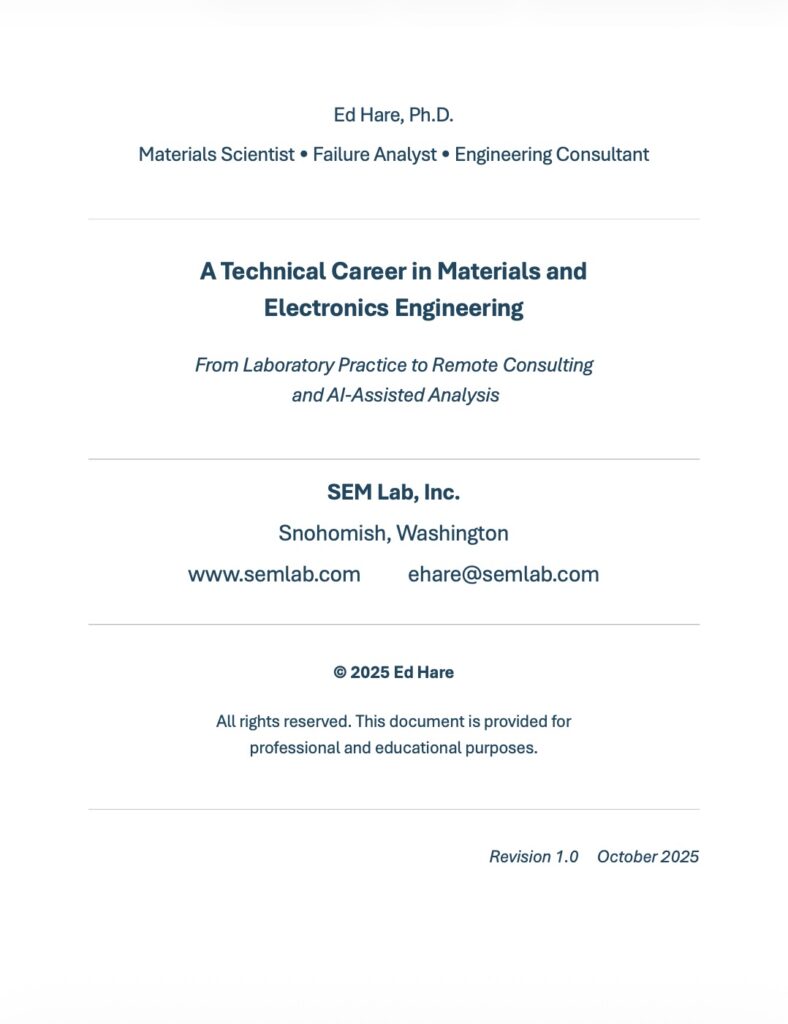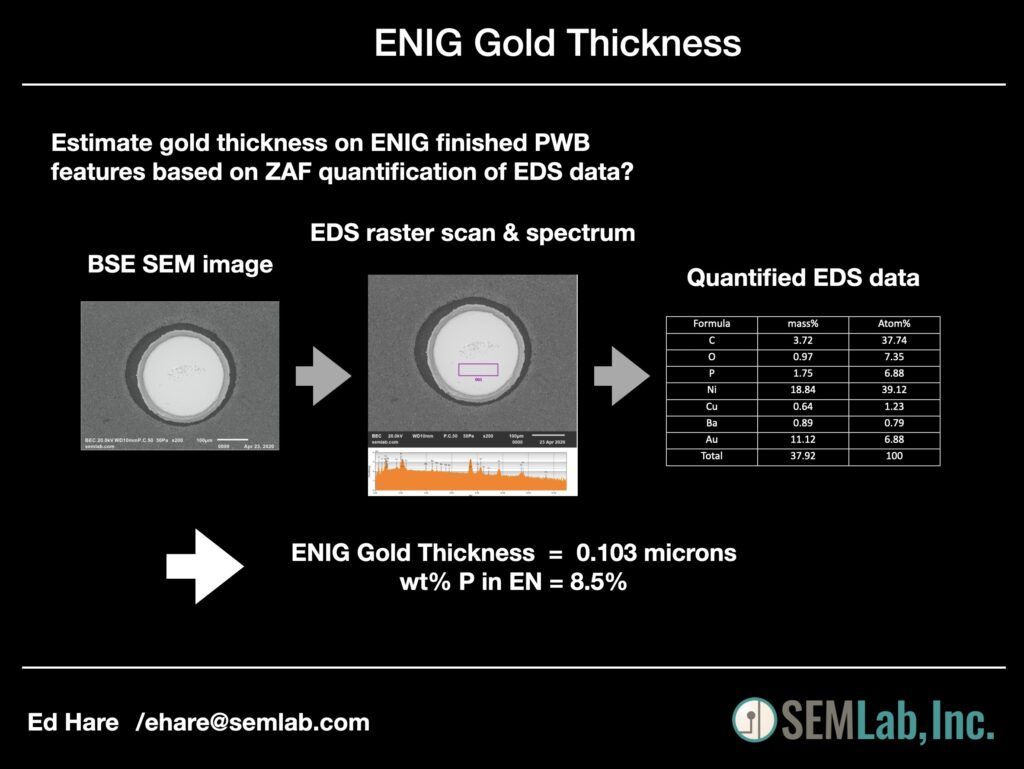We can use a BSE SEM image of a PWB microsection like this …

… and generate auto feature measurements like this in under a second.

And with a report like this …
# PWB Cross-Section Analysis Report
## Analysis Metadata
– **Report Generated:** 2025-11-12 11:04:20
– **Original Image:** NNNNNN_1.jpg
– **Magnification:** 45x
– **Scale:** 0.53542 µm/pixel
– **Image Dimensions:** 5120 x 3840 pixels (W x H)
– **Copper Coverage:** 5.6%
– **Analysis Method:** Pure Computer Vision
—
## Layer Analysis
| Layer | Y-Centerline (px) | Thickness (px) | Thickness (µm) | Std Dev (µm) | Notes |
|——-|——————-|—————-|—————-|—————|——-|
| 1 | 412 | 78.46 | 42.01 | 7.33 | Outer (top) |
| 2 | 1324 | 57.76 | 30.92 | 4.62 | Inner |
| 3 | 2226 | 54.56 | 29.21 | 7.29 | Inner |
| 4 | 3129 | 65.29 | 34.96 | 12.08 | Outer (bottom) |
## Dielectric Spacing
| Between Layers | Thickness (px) | Thickness (µm) |
|—————-|—————-|—————-|
| Layer 1 to 2 | 831 | 444.93 |
| Layer 2 to 3 | 834 | 446.54 |
| Layer 3 to 4 | 827 | 442.79 |
## PTH Geometry
| Measurement | Value (px) | Value (µm) | Std Dev (µm) |
|————————–|————|————|—————|
| Inner Diameter (ID) | 1608.6 | 861.28 | 6.50 |
| Outer Diameter (OD) | 1796.2 | 961.71 | 9.85 |
| Barrel Copper Thickness | 94.3 | 50.51 | 7.00 |
| Left Barrel | 98.2 | 52.57 | 8.67 |
| Right Barrel | 90.5 | 48.45 | 4.80 |
## Summary
– **Total layers detected:** 4
– **Outer layer thickness (avg):** 38.48 µm
– **Inner layer thickness (avg):** 30.07 µm
– **Average dielectric spacing:** 830.7 px (444.76 µm)
Contact ehare@semlab.com if you are interested in this type of tool for data collection.
Residual Molding Compound After Decapsulation
… as an Indicator of Excessive Current Flow and Joule Heating
Ed Hare – SEM Lab, Inc.
Introduction
Residual molding compound is a critical indicator of failure mode in the failure analysis of electronic components such as PMICs, SOTs, diodes, etc. This article explores how the presence of residual molding compound can signal excessive current flow, leading to charred molding compound due to joule heating. Understanding the correlation between residual molding compound and electrical overstress is an essential tool for diagnosing over current failures in electronic devices.
Background
Molding compounds are used to encapsulate semiconductor devices to protect them from environmental factors and mechanical stress. However, during the failure of electronic components, the molding compound can thermally degrade, leaving behind residual charred material after chemical decapsulation. This degradation is often a result of excessive heating caused by high current flow, known as joule heating.
Residual Molding Compound and Electrical Overstress
The presence of residual molding compound on various parts of a device, such as bond pads, bond wires, and die surfaces, can indicate areas where overheating has occurred. Several job reports have documented the association between residual molding compound and electrical overstress:
**Bond Pads and Die Surface **: Residual molding compound has been observed on bond pads (Fig. A) and the die surface (Fig. B). This suggests that these areas experienced significant heating, leading to the charring of the molding compound.
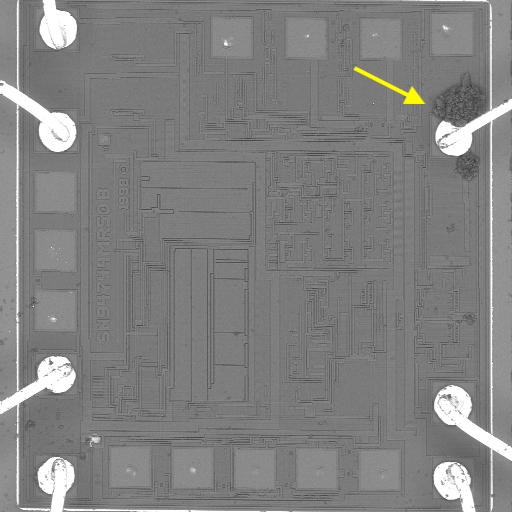
Fig. A – Processor Supervisory Circuit IC, pin-3, power-fail comparator output.

Fig. B – Single-Chip Microcomputer.
**Bond Wires**: residual molding compound on a bond wire serves as an indicator of excessive current cause overheating that is typically centered on the mid-span region of the bond wire, because the bonded ends of the wire are heat sunk and therefore cooler.

Fig. C – Voltage Regulator, TO-92 package, V_in bond wire.
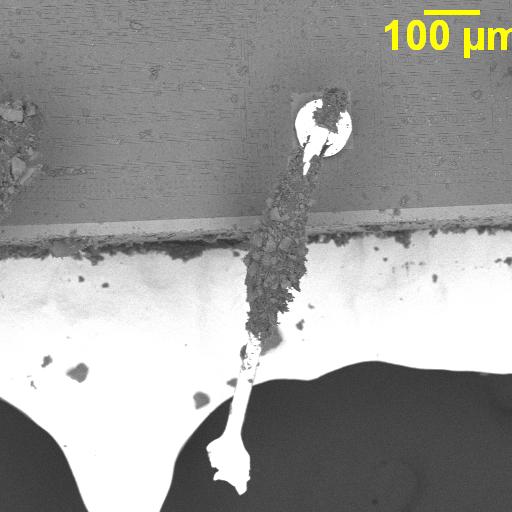
Fig. D – Voltage Regulator, TO-92 package, V_in bond wire encrusted in residual molding compound.
Additional Case Studies
Some additional cases provide examples of how residual molding compound can be used to diagnose electrical overstress:
– **Case 1**: residual molding compound on the die surface indicated a hot spot where the molding compound was charred. This charring made the residual molding compound resistant to the decapsulant, highlighting the severity of the overheating.
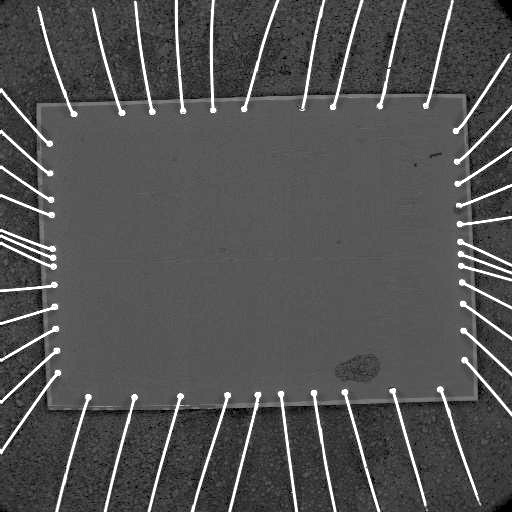
Fig. E – 8-bit Flash Microcontroller, associated with pin-32, an address signal.
– **Case 2**: Residual molding compound on the die surface suggested that the area had over-heated and carbonized the encapsulant resin, providing clear evidence of electrical overstress.
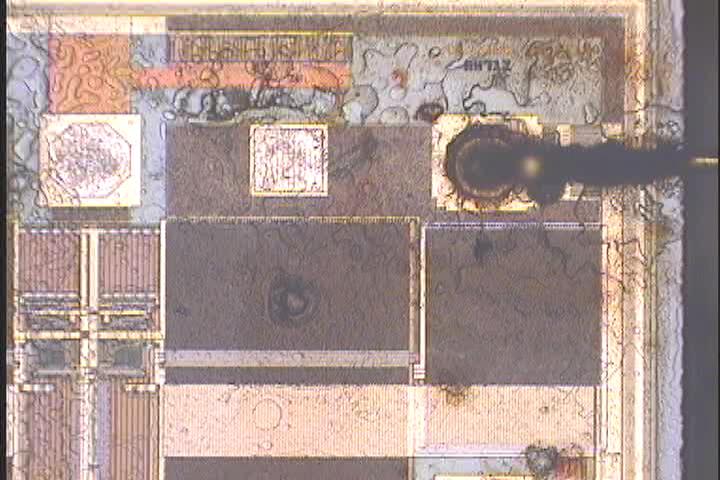
Fig. F – Dual SPDT Switch, optical image of residual molding compound on V+ bond wire.
– **Case 3**: residual molding compound adhered to a MOSFET device centered on the source wire bond and associated die region.

Fig. G – MOSFET device, residual molding compound at source wire bond and associated die region.
Conclusion
Residual molding compound is a valuable indicator of electrical overstress in electronic components. Its presence on bond pads, bond wires, and die surfaces suggests that these areas experienced excessive heating due to high current flow. By understanding the correlation between residual molding compound and electrical overstress, engineers can diagnose failures more accurately and implement measures to prevent similar issues in the future. Our future efforts include thermal modelling to potentially provide pulse width estimates based on estimated volume of residual molding compound.
Resistor Corrosion Failures Associated with Flux Residues and Protective Layer Breakdown
Ed Hare – SEM Lab, Inc.
Analysis of multiple case histories shows that resistors are vulnerable to corrosion when flux residues, halide contaminants, and weak protective layers interact. These failures are not isolated anomalies; they represent a recurring set of conditions tied to assembly practices, cleaning processes, and material compatibility.
In one study, resistors exhibited rusted end caps beneath failed paint layers. Once the protective paint fractured, chloride-bearing residues penetrated and initiated corrosion at the steel end caps. This ingress path was a consistent feature across samples.
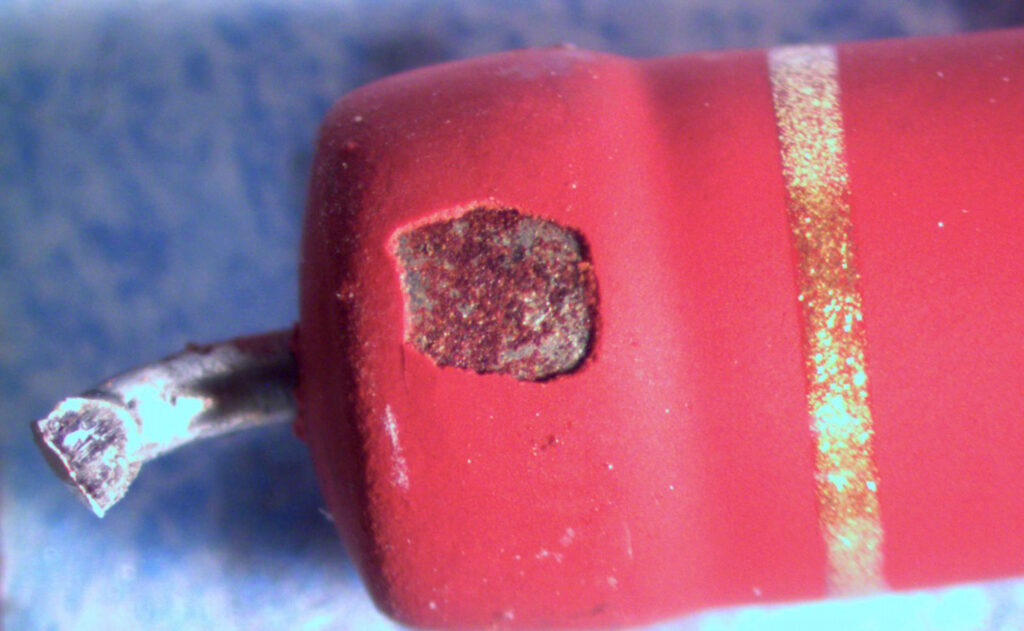
Figure 1 – Optical view of end-cap paint failure.
Backscattered SEM and EDS analysis confirmed that rust developed beneath the paint, with chlorine contamination detected in the affected regions. The presence of halides strongly implicates solder flux and cleaning residues as the root source.

Figure 2 – SEM/EDS of corrosion under paint layer.
The corrosion was not limited to the cap itself. In several cases, the attack extended to the resistive film where it joined the termination, producing variable resistance and eventual opens.
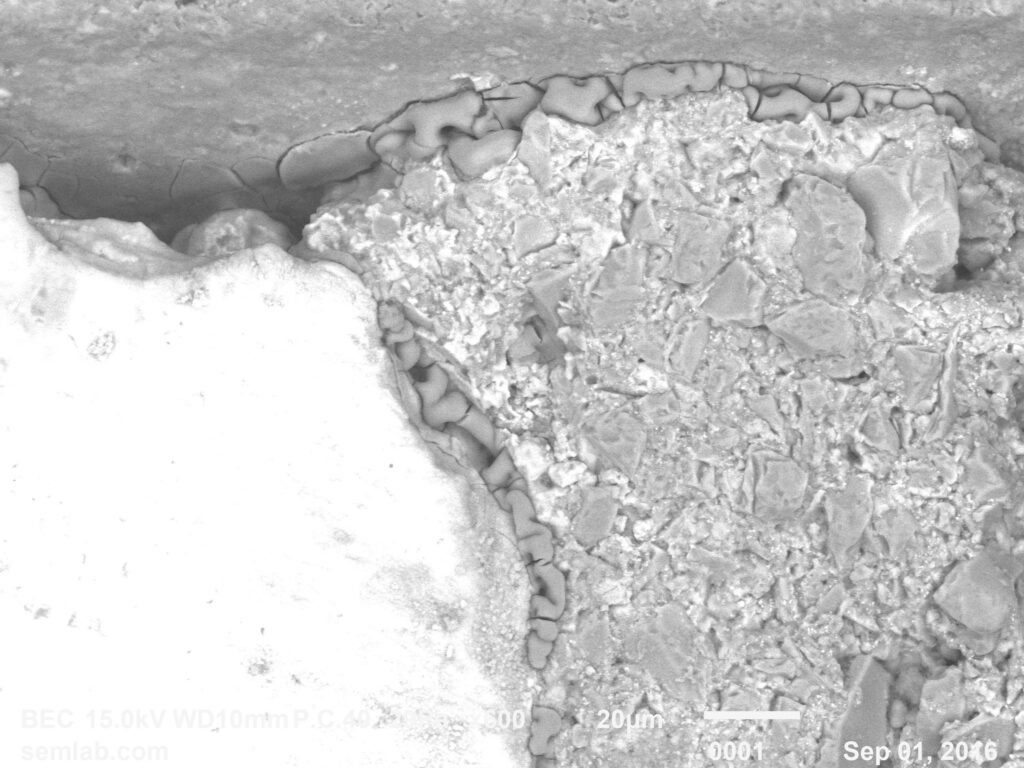
Figure 3 – SEM image of resistive film attack.
Other resistor types showed crystalline corrosion products directly on their terminations. SnO₂ crystals were identified at the surface, again associated with flux residues containing chlorine, sulfur, and phosphorus. These crystalline deposits physically bridge surfaces and act as local ionic conductors.
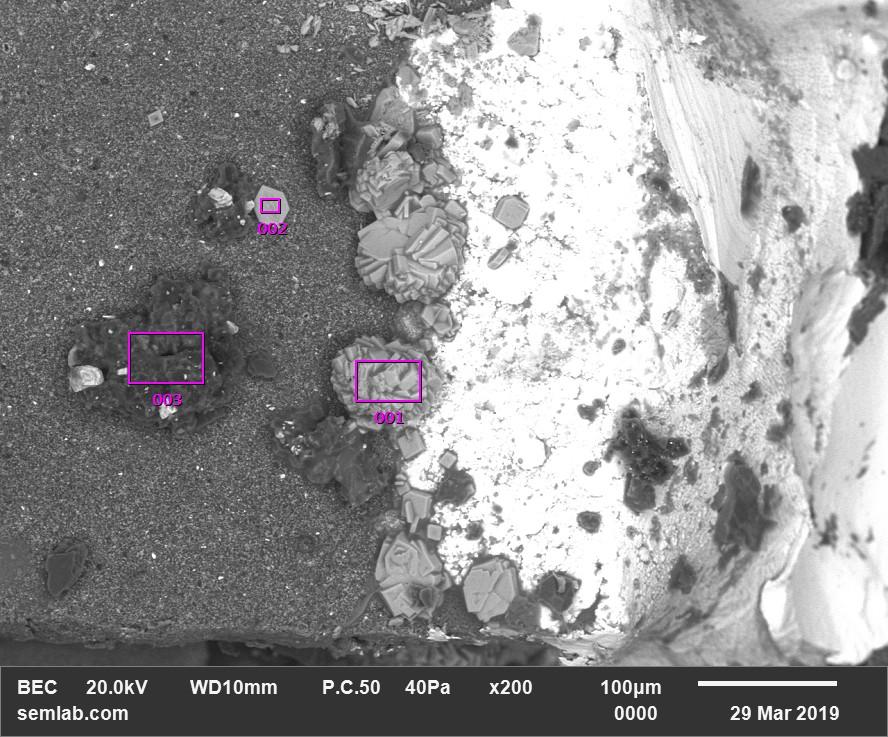
Figure 4 – Corrosion crystals on resistor termination.
For network packages, the failure mechanism was often contamination trapped beneath the component. SEM sections revealed a mixture of corrosion products and solder flux beneath the resistor arrays, exactly in the spaces that are inaccessible to normal cleaning. These residues were electrically active, producing leakage and shorts between adjacent signals.
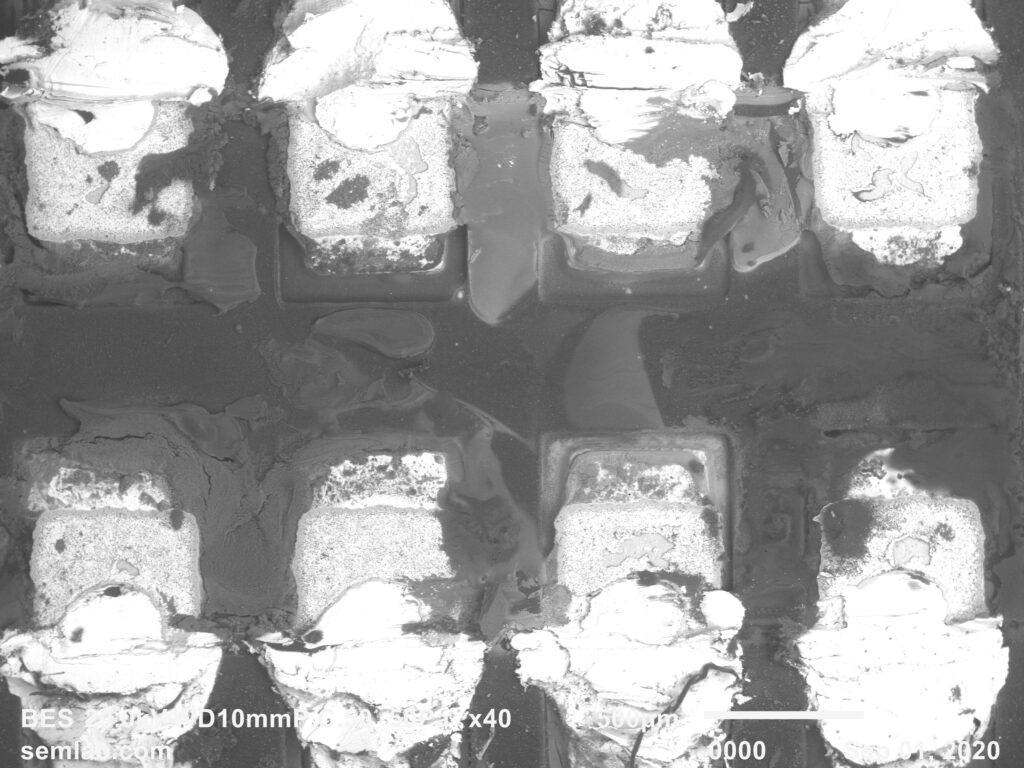
Figure 5 – Corrosion and flux residue trapped under a resistor network.
Elemental analysis of the trapped material confirmed carbon, oxygen, tin, and high levels of chlorine and bromine—classic signatures of flux activators.
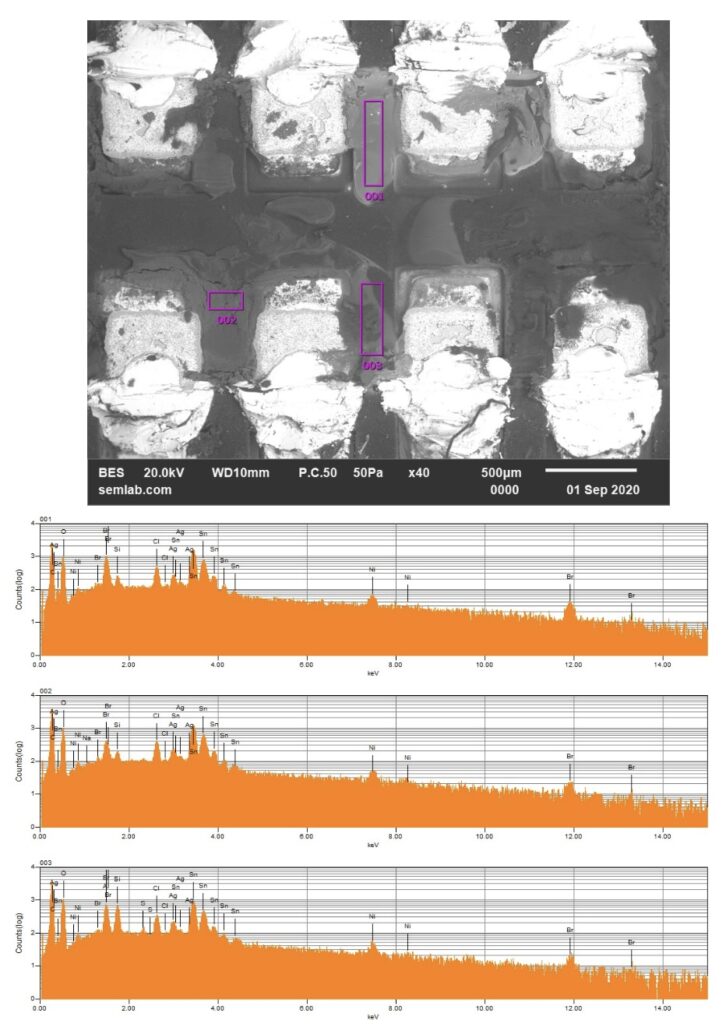
Figure 6 – EDS spectra of halide-rich residues.
Thick-film resistor terminations proved especially susceptible to sulfur attack. Elemental mapping showed sulfur and chlorine concentrated at the silver film layer, producing degradation of the conductive path. This highlights the material sensitivity of silver-based resistor films to environmental residues.

Figure 7 – Elemental map of thick-film resistor corrosion.
Finally, some failures were linked to process-induced damage. Secondary solder touch-up operations created fractured nickel plating and left flux residues on resistor terminations. In these cases, corrosion was not the only factor; mechanical disruption of the plating accelerated failure at the solder joint interface.
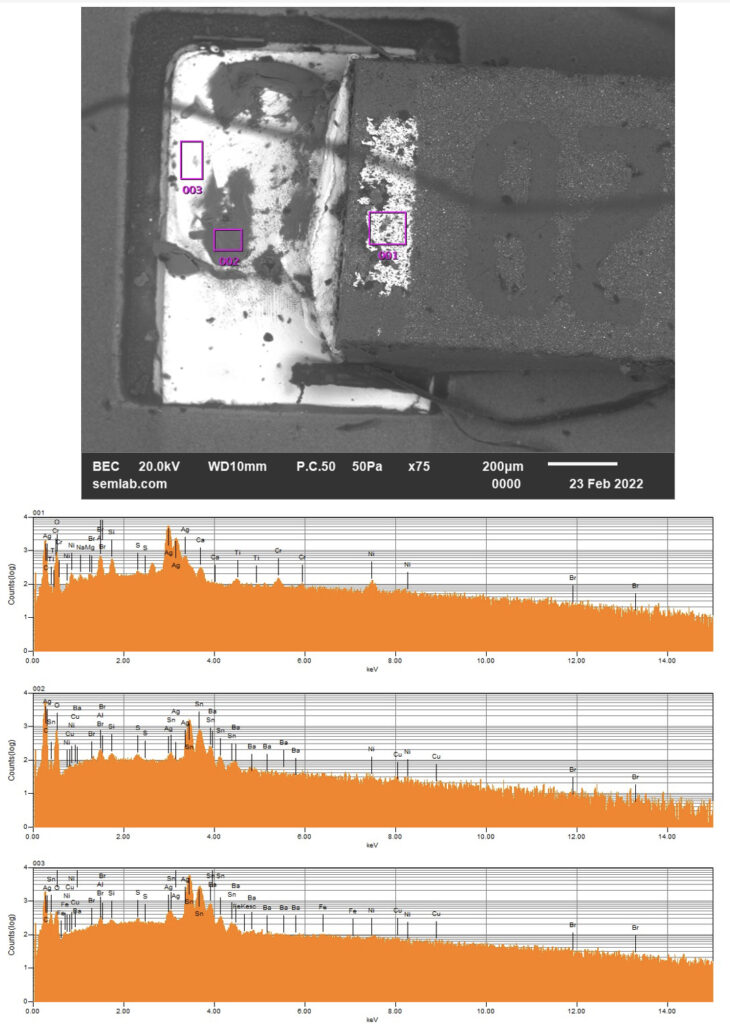
Figure 8 – Flux and mechanical termination damage.
⸻
Discussion
Across these case studies, a consistent theme emerges: halide contamination from flux and cleaning residues is the dominant driver of corrosion. Once protective barriers such as paint layers, solder masks, or conformal coats are compromised, chloride and sulfur species attack both the termination metallization and the resistor element itself.
The resulting damage pathways—rusted end caps, SnO₂ crystal formation, halide-rich residues under networks, sulfur attack on silver thick film, and fractured nickel plating—lead to the full range of electrical consequences: variable resistance, open circuits, leakage currents, and shorting between nodes.
Conclusion
The reliability of resistors depends not only on their intrinsic design but also on assembly and cleaning discipline. Avoidance of aggressive flux chemistries, thorough removal of ionic residues, and protection of vulnerable interfaces are critical. These cases demonstrate that when those controls are absent, resistor corrosion becomes an inevitable and costly failure mechanism.
Conductive anodic filament (CAF) failure has become a critical reliability concern in modern printed wiring boards (PWBs). As designs push toward finer pitch, higher layer counts, and higher operating voltages, the risk of CAF increases. CAF refers to the growth of a conductive copper filament through the glass/epoxy dielectric under bias and humidity, bridging adjacent conductors. These failures typically occur below the surface of the laminate, making them difficult to detect until electrical breakdown occurs.

Fig.1 – Plated copper is deep in the dielectric space between holes in the laminate.
CAF formation is often associated with copper plating extending beyond the plated through hole wall into adjacent resin-rich regions. Once copper is introduced into these dielectric pathways, bias and moisture accelerate ion migration. The resulting copper grows along glass/resin interfaces, creating hidden conductive bridges deep inside the laminate stack.

Fig. 2 – Failures were caused by CAF between +12V and GND at a connector.
CAF is particularly insidious when it forms between high and low potential conductors, such as +12 V and ground nets. Even small leakage currents can result in intermittent failures, system resets, or complete short circuits.
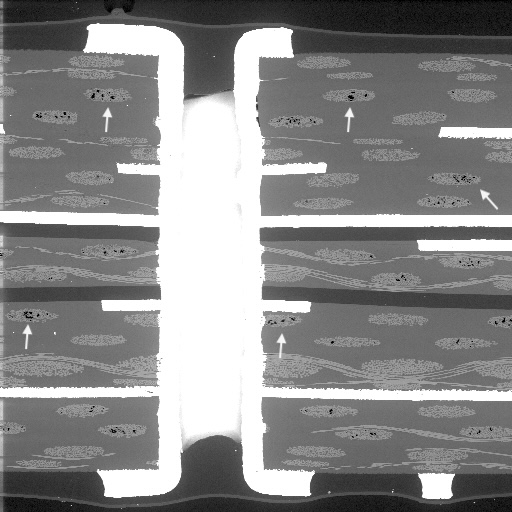
Fig. 3 – Resin starvation in glass bundles can cause CAF failure.
Areas where resin coverage is poor around glass bundles provide prime initiation sites. Resin starvation leaves microvoids and channels at the fiber-resin interface. These gaps act as capillaries for moisture and ionic species, establishing a pathway for CAF growth. Process controls during lamination—such as ensuring proper resin flow and glass fabric wetting are therefore crucial to prevention.
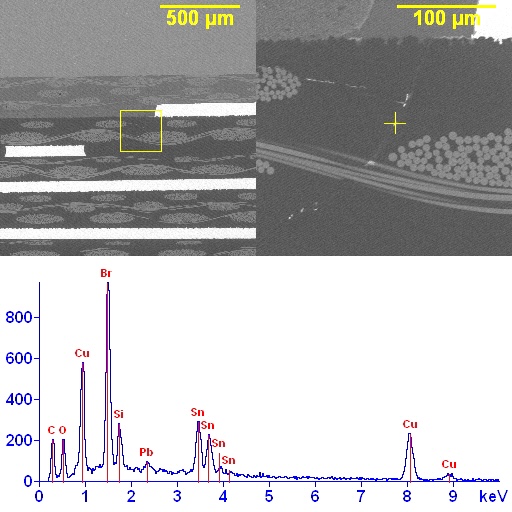
Fig. 4 – Crazing and measling of laminate can support CAF failure.
Crazing and measling are microcrack and void patterns associated with glass bundle movement or thermal-mechanical stresses. These features effectively increase the available surface area and pathways for CAF propagation. A laminate that visually shows measling may already harbor hidden weaknesses that accelerate conductive filament growth under bias and humidity stress testing.
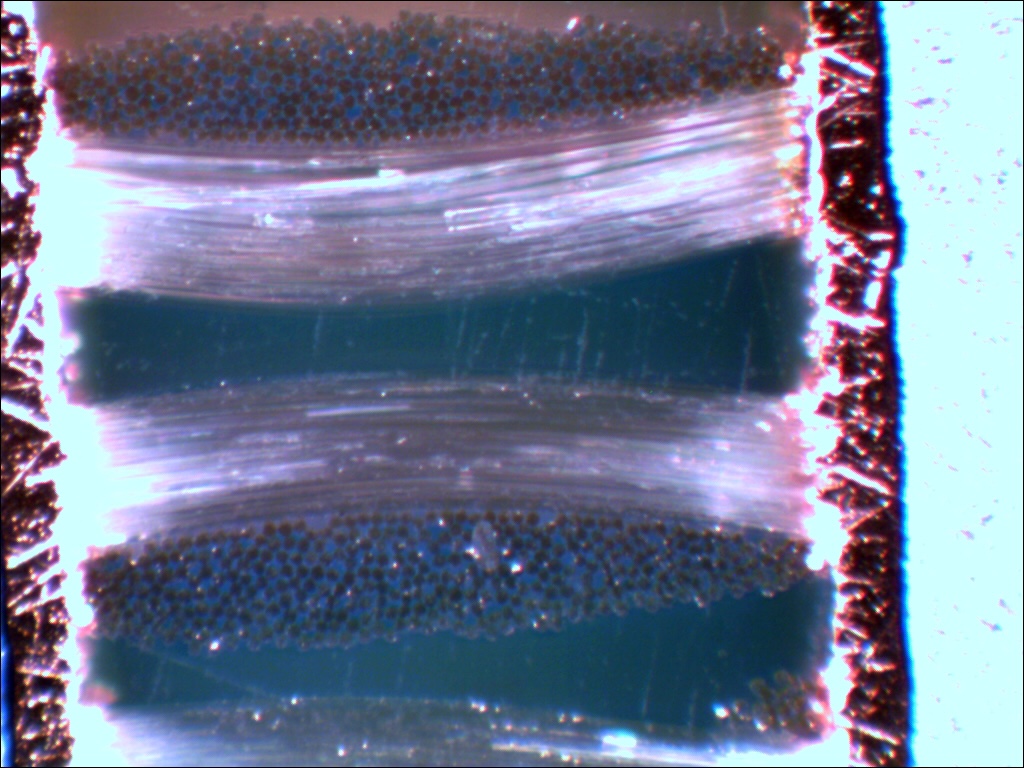
Fig. 5 – Dark field optical images can be useful for examining fiber delamination in PWB sections.
Optical microscopy, particularly in dark field mode, highlights fiber pullout, voiding, and microcracking within cross-sections. These imaging techniques provide valuable insight into resin-glass integrity and delamination. Proper sectioning and imaging remain vital diagnostic steps in CAF investigations.
Conclusion
CAF originates inside the laminate microstructure, where resin-glass interfaces and plating intrusions provide pathways for copper migration. Once established, these conductive filaments undermine reliability and are difficult to detect by conventional inspection. Effective CAF prevention requires careful control of laminate fabrication, resin distribution, and design spacing rules, coupled with targeted failure analysis methods when issues arise.

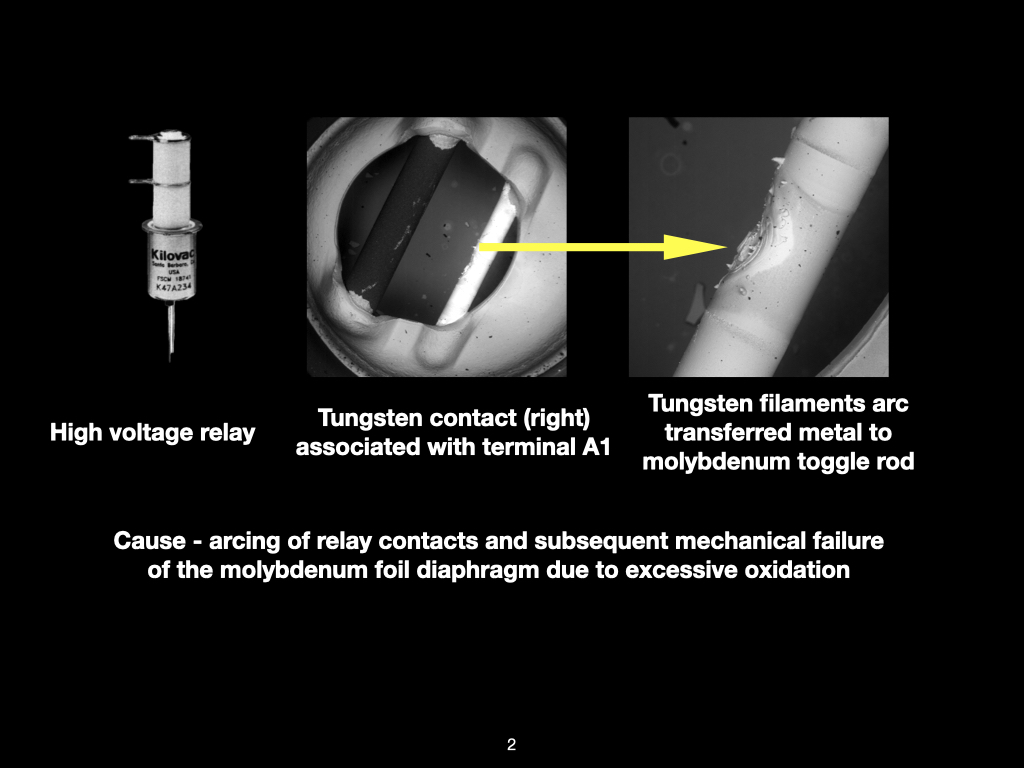


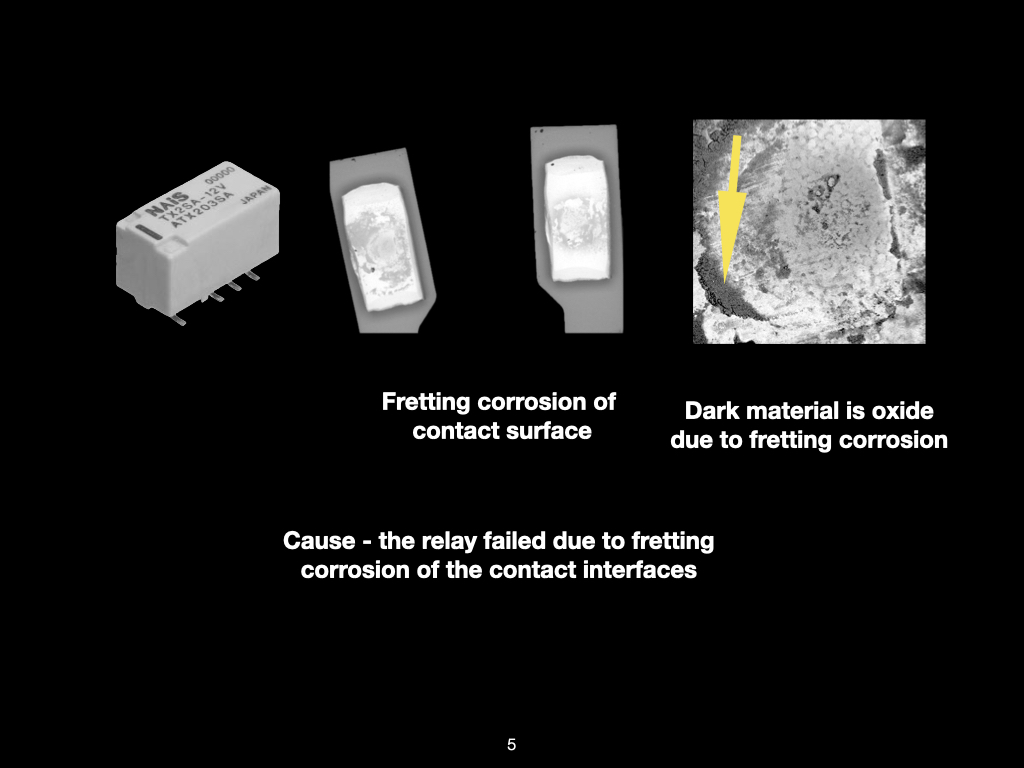

Weibull analysis is a powerful statistical tool commonly used in electronics reliability engineering to model failure behavior over time. Its flexibility in handling different failure modes—early life, random, or wear-out—makes it especially valuable in the complex, multi-mechanism failure environments typical of electronic components and assemblies.
These are key use cases for Weibull analysis in electronics reliability:
1.
Failure Mode Characterization
-
Purpose: Determine whether a failure mode is infant mortality, random, or wear-out.
-
Example: Analyzing time-to-failure data for a batch of surface mount capacitors under thermal cycling to distinguish between early cracking (β < 1), random failures (β ≈ 1), or fatigue wear-out (β > 1).
2.
Life Prediction / Time-to-Failure Estimation
-
Purpose: Estimate the median life or characteristic life (η) of a device under use or test conditions.
-
Example: Predicting BGA solder joint fatigue life under power cycling stress based on accelerated test data.
3.
Accelerated Life Testing (ALT) and Extrapolation
-
Purpose: Use high-stress data (e.g., temperature, humidity, voltage) to model life at normal use conditions using acceleration models (e.g., Arrhenius, Coffin-Manson, Norris-Landzberg).
-
Example: Subjecting PCBs to elevated temperature and humidity to simulate dendritic growth or corrosion, then applying Weibull + acceleration models to estimate field failure rates.
4.
Comparative Reliability of Designs, Materials, or Processes
-
Purpose: Compare different design or material variants to determine which one offers longer life or fewer failures.
-
Example: Comparing ENIG vs. ENEPIG surface finishes by running temperature cycle tests and plotting separate Weibull curves to assess which has higher characteristic life.
5.
Failure Rate Estimation (λ) and MTBF Calculations
-
Purpose: Derive Mean Time Between Failures (MTBF) or failure rate, especially in systems with a constant failure rate (β ≈ 1).
-
Example: Estimating MTBF for a power supply module operating in a data center, where failures are largely random due to overstress or component defects.
6.
Warranty and Risk Forecasting
-
Purpose: Predict percentage of devices that will fail before a specific time to define warranty coverage.
-
Example: Forecasting the probability that LED driver ICs will fail within a 5-year service window in a commercial lighting application.
7.
Root Cause Correlation
-
Purpose: Identify underlying mechanisms by examining how β (Weibull slope) changes with design, processing, or test variables.
-
Example: If β increases significantly after a design change, it may indicate better control over early life defects.
8.
Field Return Analysis
-
Purpose: Apply Weibull analysis to returned units from the field to distinguish between systemic failures and random defects.
-
Example: Analysis of failed MLCCs from automotive ECUs to determine if failures are consistent with mechanical flex cracking (brittle failure, high β) or ESD-related dielectric breakdown (random).
9.
Burn-In Screening Optimization
-
Purpose: Use early life Weibull data (β < 1) to justify burn-in screening duration and effectiveness.
-
Example: Determining if 24-hour power-on burn-in is sufficient to weed out early IC failures caused by latent defects.
10.
Reliability Growth Tracking
-
Purpose: Show how process improvements (e.g., cleaning, soldering controls, layout changes) shift the Weibull distribution toward higher reliability.
-
Example: Tracking Weibull parameters of conformal-coated PCBs before and after changing flux chemistry or cleaning method.
We can write equations and make calculations based on atomic weight & density of pure elements to determine what volume change (%) occurs when for example Au + 4Sn >>> AuSn4 and using intermetallic densities from published sources as shown in Fig. A.

Fig. A – Volume change during formation of solder intermetallic compounds.
Since volume changes during IMC formation, we can expect void formation and interfacial cracking at the IMC/matrix interface as most of these systems show contractions in volume. This may be a contributing factor to thermal fatigue damage found in solder joints on printed circuit board assemblies.
The melting temperature of these intermetallic compounds are shown in Fig. B. Most of these melting temperatures are greater than peak reflow temperature, so the IMCs exist as solid particles in molten solder until the system cools below the solidus temperature.

Fig. B – Melting temperature of intermetallic compounds.



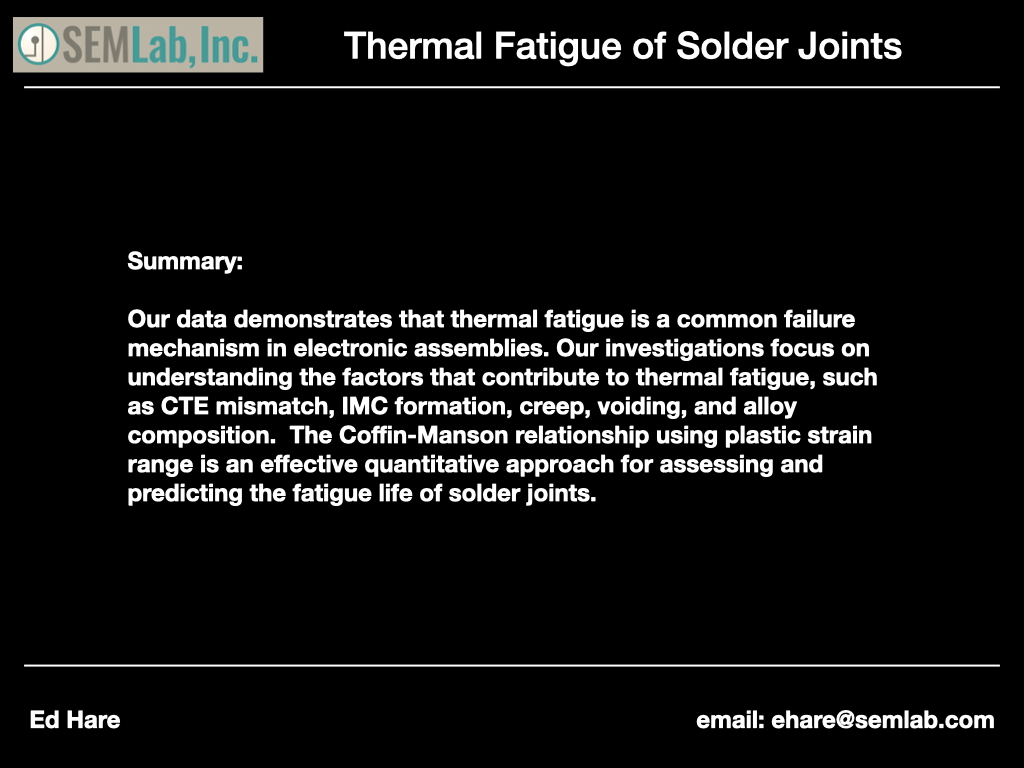
Recent Posts
- Origins and Evolution of SEM Lab, Inc.
- PWB Cross-section: Automated Feature Analysis
- Residual Molding Compound After Decapsulation
- ENIG Gold Thickness
- Resistor Corrosion Failures
- CAF related failures
- Relay Failures
- Weibull analysis
- Solder Joint Intermetallic Compounds
- Thermal Fatigue of Solder Joints
- SLI_Insight
- drilled hole quality
- PWB Internal Short – Example C
- PWB Internal Short – Example B
- PWB Internal Short – Example A
- PWB Failures
- The EDS spectrum is the first step.
- MLCC Flux Entrapment
- Solder Joint Failures
- PCBA bending
- Failure Analysis vs Testing
- Electronic Connectors
- LED Failures
- Vias in Printed Circuit Boards
- Flux Cleaning is Essential
- Premature Failure of WLEDs
- ENIG Analysis
- Diode bridge
- BGA Solder Joint Simulation
- QFN Failures
- PWB Quality Problems
- Al Bond Pad with Ti-W Barrier
- Thin Film Thickness Measurements
- EOS fused bond wire
- EOS Damaged Op Amp
- BGA Assembly Verification
- Contamination on MLCC Termination
- MLCC Knit Line Related Failures
- CMOS Flip-Flop IC
- Failure Analysis of PWBs
- Corrosion Failures
- Solder Joint Failure Modes
- Glass Rectifier Diode
- BGA Pad Cratering
- BGA Solder Joint Microsection
- BGA Solder Joint Height
- Microsections
- MLCC knit line failure
- Head-in-pillow defect
- IR LED Open Circuit
- Dual Op Amp
- MELF Resistor
- SMT Transformer
- LED Bond Wire Break
- Chip Components
- Microcontroller failure
- QFN Solder Joint Evaluation
- Connector Contamination
- Thermal Stress or EOS
- PWB Short
- Creep Rupture Failure
- Mechanical Overstress of Resistor Solder Joints
- BGA warpage
- VD on PCB
- Pb-dendrites
- Corrosion of Flex Assembly
- Optical vs SEM imaging
- FTIR of Unknown Plastic
- Counterfeit AE Capacitors
- Nichrome Resistors
- Yellowed resistors
- ENIG Discoloration
- Laminate Damage
- Wear Out of Aluminum Electrolytic Capacitor
- Suspected tin whisker
- Solder Joint Fatigue
- Failure of IR LED
- Residue on PCBA
- MLCC Bending Fracture
- FPGA ECM short
- Tin Whiskers
- LED Lamp Flickers
- Gold Embrittlement
- MLCC manufacturing flaw
- Diode Short
- ESD Damage in Zener Diode
- Severe corrosion on PCBA
- PCBA Corrosion
- Shorted FET
- Dendritic Growth – Shorts on PCBA
- ECM of PWB Battery Contacts
- Bad Board Design
- Solder Joint Failure
- Tombstoning of SMD Inductor
- Silver Sulfide Crystals
- IC Bond Pad Corrosion
- Crystal Frequency Shift
- Damage in BGA Device
- Manufacturing flaws in ceramic capacitor
- Red Phosphorus in IC Molding Compound
- ENIG corrosion problem
- FET failure
- Diode failure
- Ta-cap breakdown
- MLCC bending fracture
- Internal PWB Short
- Microsection of gold-plated contact
- Trace fractured on Rigid Flex
- EOS failure of Power MOSFET
- Black Pad Syndrome
- Power Transistor
- Blue LED
- Tin Whiskers
- Bad diodes
- EDS shows Teflon Contamination
- Tin whisker
- Residue under BGA
- Fuses on Video RAM
- Solid-State Relay
- Knit Line Fracture and Porosity
- ESD damaged diode
- Silver Sulfide Growth
- MLCC short
- Fused bond wire
- Skip plating
- Resin Starvation
- Quad NOR ICs
- LED Failure
- Electromigration short
- Stranded wire failure
- Corroded PTH-via
- Tin-lead whisker
- SAC solder joint
- SMD diode short
- Excess solder gull-lead joint
- Decapsulated diode
- BGA die crack
- EOS on GaAlP LED
- BGA warpage
- EOS Dual Op Amp
- Double-Dumet diode
- Corroded inductor windings
- EOS damage on VDD
- EOS fused bond wire
- Marking on transistor die
- Welded relay contact
- Inner Layer Separation
- Bond cratering microsection
- MLCC dielectric porosity
- Diode EOS
- MLCC flaws
- Parylene coating
- Diode EOS
- BGA gas voids
- Distorted BGA
- PLCC bond fail
- Conductive residue
- PTH barrel crack
- Missing BGA ball
- LED die fracture
- Fractured solder joint
- Electromigration short
- MLCC firing cracks
- Ta-cap failure
- Over crimped
- Suspect wedge bond
- BGA ball fail
- Bad HASL
- LED bond failure
- LED failure
- Resistor network solder joint fracture
- PTH via barrel crack
- EOS failure
- ENIG problem
- Black pad syndrome
- Poorly drilled hole
- IC voltage transient
- Wire bond
- Bond cratering
- Chip resistor fracture
- Via corrosion
- MLCC knit line failure
- SOT23 diode
- Chip resistor corrosion
- BGA Solder Mask Defined Pads
- PTH Pad Lift
- LED microsection
- MLCC flex fracture
Recent Comments
- on PWB Quality Problems
- on Diode Short
- on PCBA bending
- on PCBA bending
- on PCBA bending

